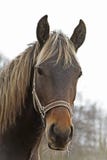

On the back of the head is a small tuft of feathers that can erect in a crest. Adult breeding plumage does not differ from non-breeding plumage. The underparts are a lighter shade of grey. The primaries are black-tipped and secondaries have a greenish tint. The plumage is slaty blue-grey overall with a darker grey head.

Males are larger than females and have longer bills. Large, somewhat frightful looking birds, shoebill storks stand 110 to 140 cm tall. This causes the fish living in the water to surface for air more often, increasing the likelihood a shoebill stork will successfully capture it. They are also found where there is poorly oxygenated water. When shoebill storks are in an area with deep water, a bed of floating vegetation is a requirement. They are often found in areas of flood plain interspersed with undisturbed papyrus and reedbeds. Shoebill storks inhabit freshwater swamps and extensive, dense marshes. This bird's range usually coincides with that of papyrus and lungfish. Smaller populations occupy eastern Zaire and Rwanda. The main populations are found in southern Sudan (mainly in the White Nile Sudd), the wetlands of northern Uganda and western Tanzania and the Bangweulu swamp of northeastern Zambia. Shoebill or whale-headed storks are endemic to Africa and inhabit the east-central part of the continent.


 0 kommentar(er)
0 kommentar(er)
